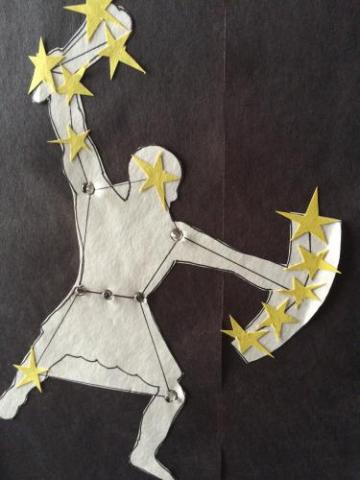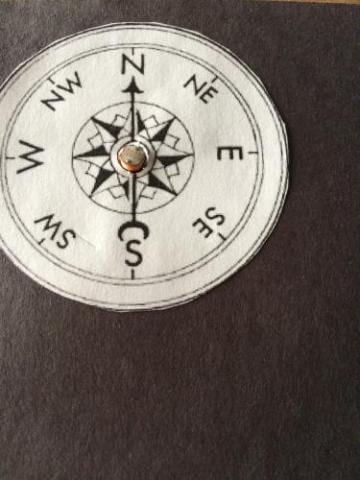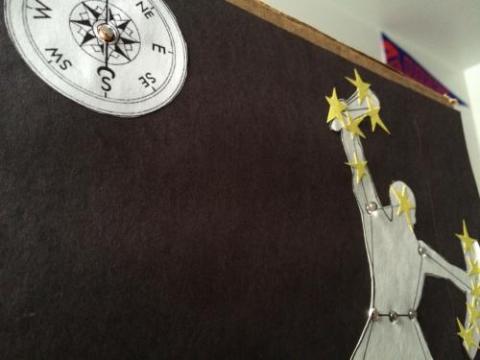Constellations
Subjects
Science
Project Type
Moving Scenes
Required Tutorials
Rotation servo, Single color LED, Tri-color LED, & sensors
Estimated Time
Long (6+ hours)
Description
Students will use the Hummingbird Kit to create a model of a constellation.
Free Teacher Materials
Project Map
Learning Goals
- The student will be able to create a model of the constellation of their choosing using a Hummingbird controller, associated components, and other materials.
- The student will be able to describe the design process and any troubleshooting strategies in a laboratory journal.
- The student will be able to cite the 3-4 brightest stars in a constellation of their choosing.
- The student will be able to compare and contrast the characteristics of their constellation and the constellations chosen by other students.
- The student will be able to explain the practical uses of their constellation to ancient civilizations and the mythology behind their constellation as told by ancient civilizations.
Materials
- Hummingbird Bit Premium Kit
- 2-4 Tricolor LEDs and 4-6 Single LEDs
- 1-2 Motors and 1-2 Servos
- 1 Sensor (light, distance, or temperature)
- Construction paper
- Markers
- Cardboard
- Hot glue
- String, wire, and rope
- Scissors
- Electrical tape
- Possible Craft supplies
Tips
- Have students work in groups of 2-3.
- Our Printables page has a variety of documents for making teaching and learning with Hummingbird easier. Visit and explore resources like the My First Robot Design Notebook now.
Steps
Students will be placed in groups of 4-5 and will choose a constellation to model. They will use at least 3 LEDs, 1 motor or servo motor, and 1 sensor. They will research the constellation and portray several facets of information that they have found. Students will keep a laboratory journal describing the astronomical attributes of the constellation (distance across in light years, type of stars, the color of stars, age of stars, brightest to least bright stars, when it appears in the Northern Hemisphere, etc.). The laboratory journal will also detail the design process of the group and any troubleshooting involved in the building/programming process. Students will write a report about the significance of the constellation with regards to mythology and history of ancient civilizations (did it signal planting season? What myths surround its form?). Students will portray the envisioned form of the constellation as seen by ancient civilizations (Orion is the hunter, etc.) and they will also show the position of stars in the constellation. Students will then input components (LEDs, motors, sensors, etc.) and program these components to significantly represent their constellation (intensity of one LED star as compared to another, the constellation moving on a servo to show its angled position at different times in night, etc.).
Timeline:
- Day 1 and 2: Orientation
- Students will watch videos explaining the components of the Hummingbird.
- Students will watch videos explaining how to use the basic programming software.
- Students will become familiar with the software and hardware.
- Day 3 and 4: Introduction
- The student groups will be chosen and a constellation will be chosen by each group.
- The students will begin brainstorming their design and will keep a group laboratory journal to document their design and a running list of materials.
- Day 5 and 6: Research
- Groups will research the mythology behind their constellation.
- Groups will research how the constellation was important to ancient civilizations (seasonal
significance, etc.). - Groups will research properties of the constellation – brightest stars, type of stars, distances
from Earth, etc. - The research will be recorded in a journal.
- Day 7 and 8: Design
- The student groups will continue to design their robots based on their research.
- The student groups will continue adding their designs to their laboratory journal.
- Day 9,10, and 11: Building
- The student groups will begin gathering materials and putting together their robot.
- Any troubleshooting issues will be recorded in their laboratory journals and strategies to
combat these issues will be recorded.
- Day 12, 13, and 14: Programming
- The student groups will begin using CMU Create Lab to program their robots.
- The groups will continue to record troubleshooting strategies.
- Day 15: Presentation
- The student groups will present their robots to the class, as well as extra information found
about the mythology and history of the constellation. - The group laboratory journals will be turned in for assessment.
- The individual papers will be turned in for assessment.
- The student groups will present their robots to the class, as well as extra information found
Standards Alignment
This projects meets Next Generation Science Standards concerning gravity, stars, and the solar system (5-ESS1-1, 5-ESS1-2, MS-ESS1-1, and MS-ESS1-2). In addition, it can provide an opportunity to discuss how sound and light energy are transmitted by waves (4-PS4-1 and MS-PS4-1). This project is also aligned with Common Core ELA anchor standards that focus on informative writing and revision (CCSS.ELA-LITERACY.CCRA.W.2-5); research (CCSS.ELA-LITERACY.CCRA.W.7-8,10); and speaking and listening (CCSS.ELA-LITERACY.CCRA.SL.4,6).




